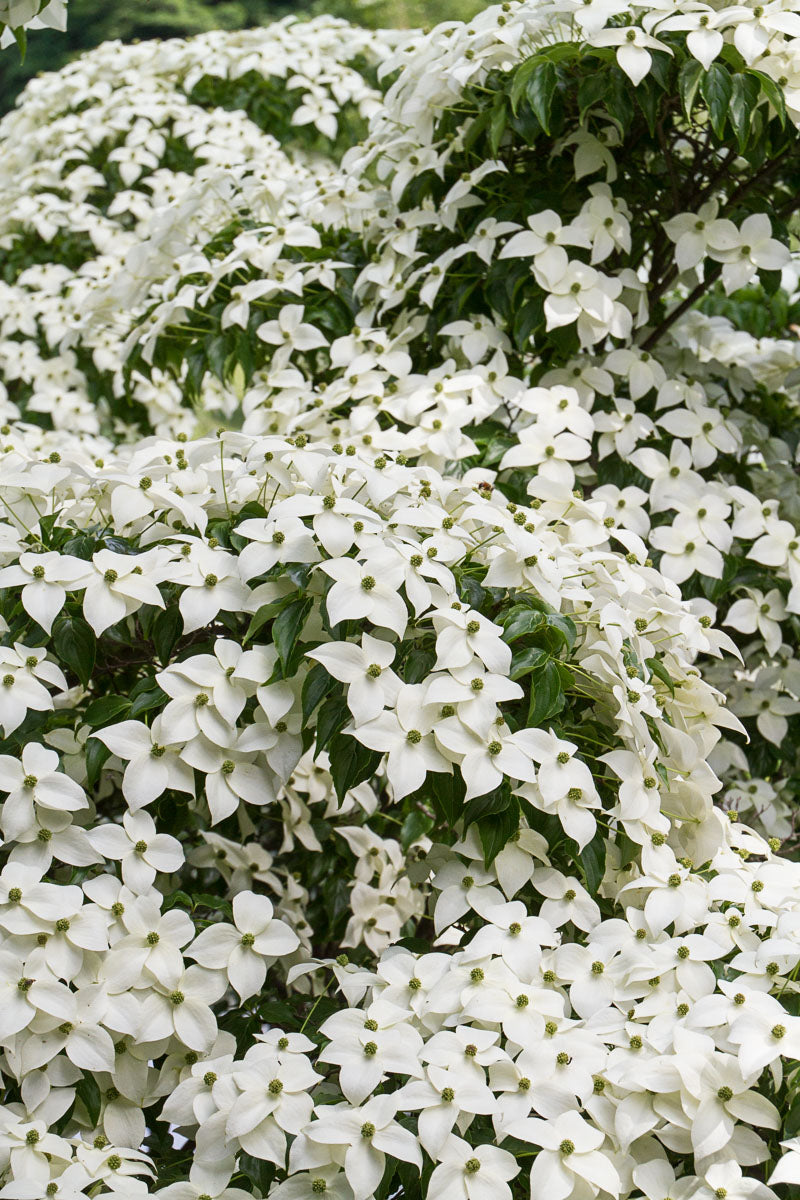
October: The Dogwood
The Dogwood is a well-known deciduous tree that blooms in early to mid-Spring. It symbolizes “birth” and “rebirth” and is so beloved that Virginia, North Carolina, and Missouri have all claimed it as their state tree or flower.
Let’s take a deep-dive into it’s history, uses, and botanical characteristics.
Cornus Florida
Cornus is the genus name for the group of 50 to 60 species of trees and shrubs within the Dogwood family (Cornaceae). Cornus comes from the Latin word, cornu, meaning horn, referring to the dogwood’s hard wood. The name dogwood comes from the word "dagwood", which refers to the tree's early use for making swords and daggers.
The flower of the dogwood is actually the yellow center! The white “petals” are modified leaves, known as bracts, and aren’t truly petals. They come from the overwinter bud scales which open up to create the bracts.
If you’re looking for tips or information on growing a dogwood, checkout the tree center here!
Mythology and Lore
Some varieties of dogwood are endemic to the Americas and are part of prominent legends in Appalachia. In fact many tribes had lore tied to dogwoods, such as the Mohawk who identified the “Cosmogonic Tree of Life in the Sky World” with a giant dogwood. People of the Quileute and Makah communities believed the dogwood brought good luck and ate its fruit in ceremonies (I can confirm the fruits are delicious). On the other hand, the Blackfoot considered the dogwoods as embodied masculinity, and did not allowed their woman to the fruits.

The Cherokee believed in an anthropomorphic spirits called Little People or Yunwi Tsunsdi, similar to pixies or leprechauns. There were three types of Little People: The Rock People, Laurel People, and Dogwood People. The Rock were vengeful, Laurel enjoyed play, but the Dogwood People were helpers and caretakers. They did not take and did not expect any payment, but enjoyed helping others; a beautiful tie to this beautiful tree.
In Christianity, an unknown author tells the story of how dogwood was the chosen timber to crucify Jesus. The writing says that he promised to never let another dogwood grow large enough to be used for another crucifixion. Thus the dogwood was cursed, or blessed depending on how you put it, to grow slender and twisted.
Historical and Current Uses
Flowering dogwood root was used by Native Americans as a fever reducer, skin astringent, an antidiarrheal agent, and a pain reliever for headaches, sores, and muscle inflammations. It was also used to counteract the effects of many poisons and as a general tonic.
During the Civil War, the dogwood bark became a replacement for quinine, a drug still used nowadays to treat malaria. Malaria often killed soldiers in camps with an estimated 115,415 cases among Confederate troops within two years. The dogwood tincture was not as effective as the quinine, which comes from a Peruvian species called cinchona, but it was a useful alternative at the time.
Snacks!
Dogwood fruits are edible and delicious! Especially if you’re my chocolate labrador, Maple, who has discovered how to pick the ripest ones and deseed them!
Beginning in mid-September, the dogwood fruits redden, soften, and develop a sweet, persimmon flavor. As they drop to the ground, they can be harvested. Fruits should be slightly soft and a deep red color that is not yet purple. They’re thought to contain impressive amounts of anthocyanins that act as antioxidants.
The fruit can be made into jam, incorporated into baked goods, or turned into mead. The dogwood is the tree that keeps on giving, just as the Cherokee’s Little People showed us.
Fun Facts!

The flowering dogwood is a soil improver because its leaf litter decomposes more rapidly than most other species. For this reason flowering dogwood has been planted on abandoned strip mines and used for urban forestry projects.
Native Americans planted their crops, particularly corn, when the dogwoods bloomed
A less fun but good to know fact: According to the USDS, the flowering dogwood is endangered in Maine, vulnerable in New York, and threatened in Vermont!
Thank you for joining this month to learn about Dogwoods!
Curious to learn more? Checkout these sources!
https://plants.usda.gov/DocumentLibrary/plantguide/pdf/pg_cofl2.pdf
https://www.creechlandscape.com/2022/04/22/the-history-of-the-dogwood-tree/
https://gogreenbk.org/flowering-dogwood-myths-and-medicine/
https://pubmed.ncbi.nlm.nih.gov/16139847/
https://www.phillyorchards.org/2021/06/14/add-dogwood-fruit-to-your-forage-list-this-year/
